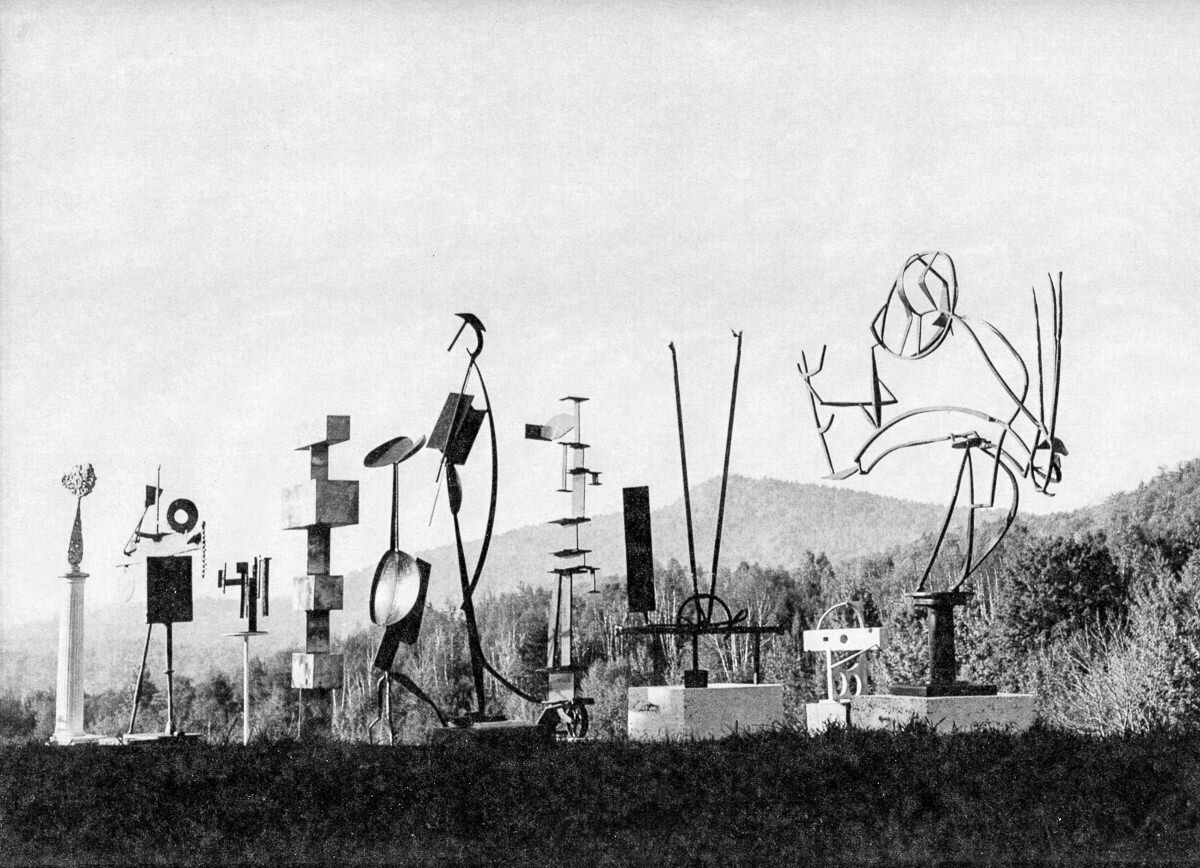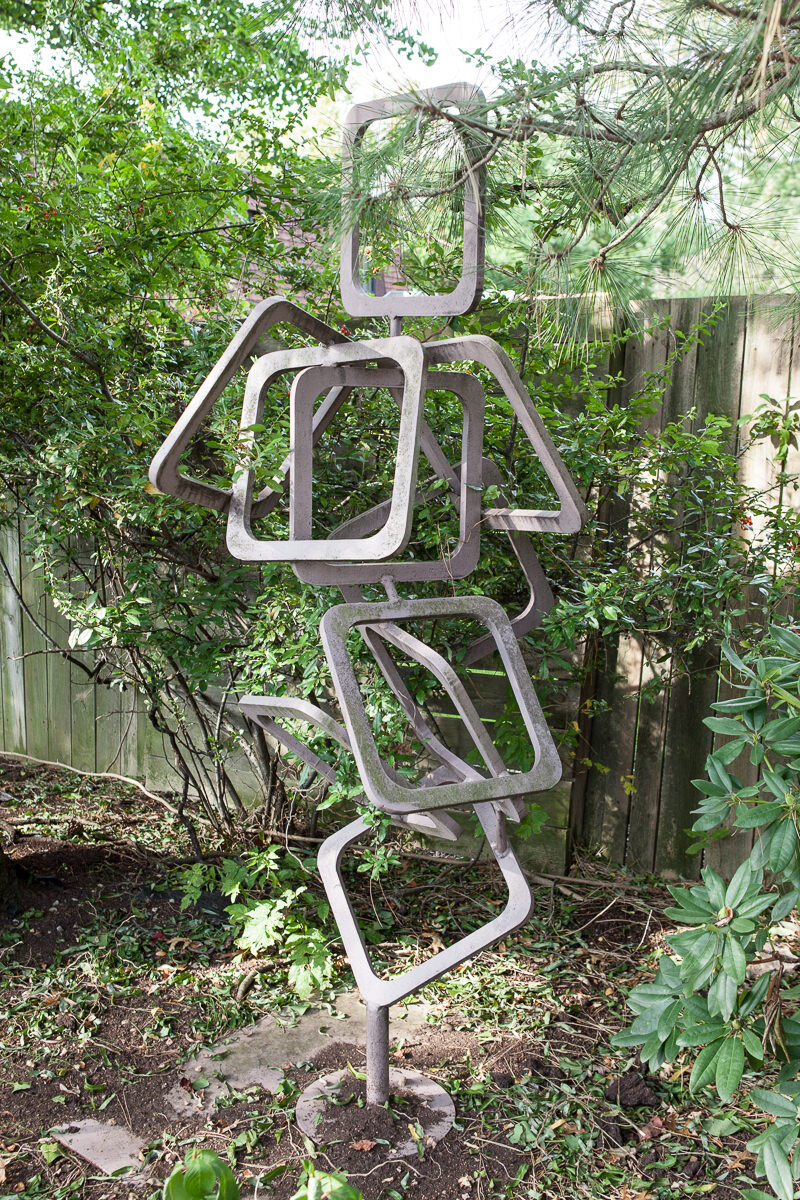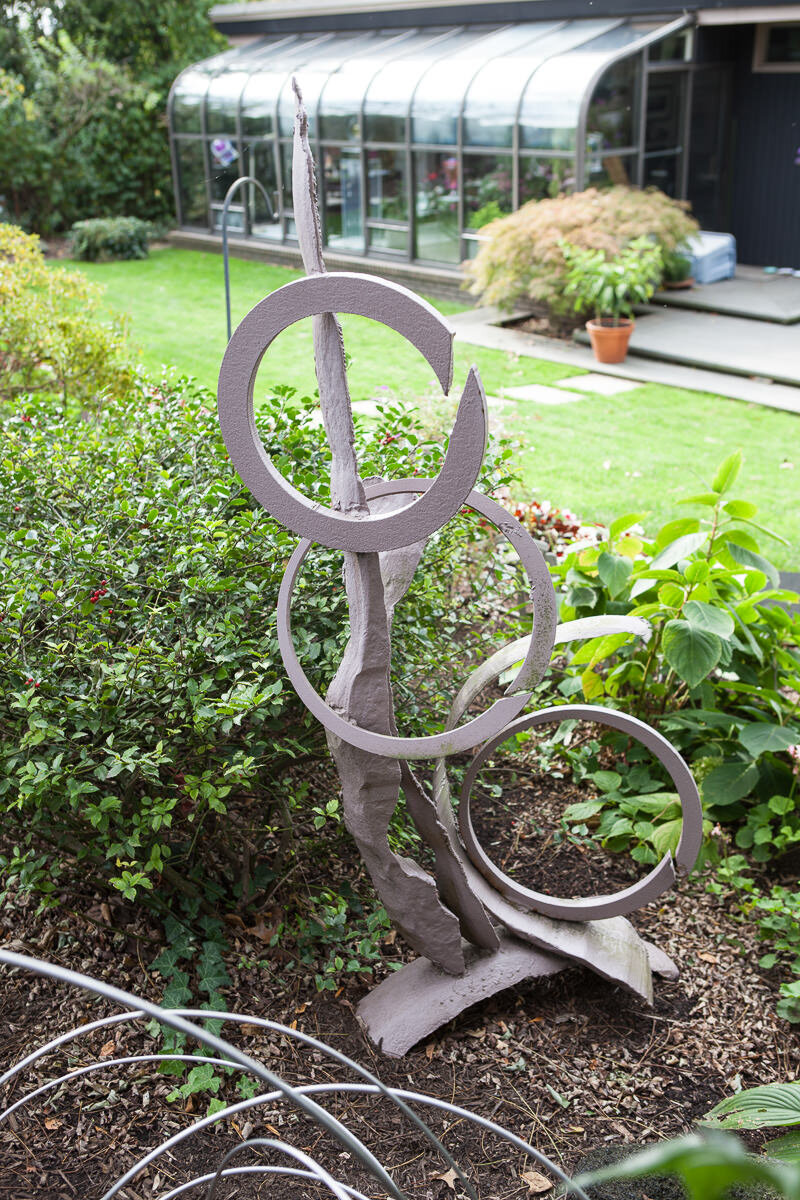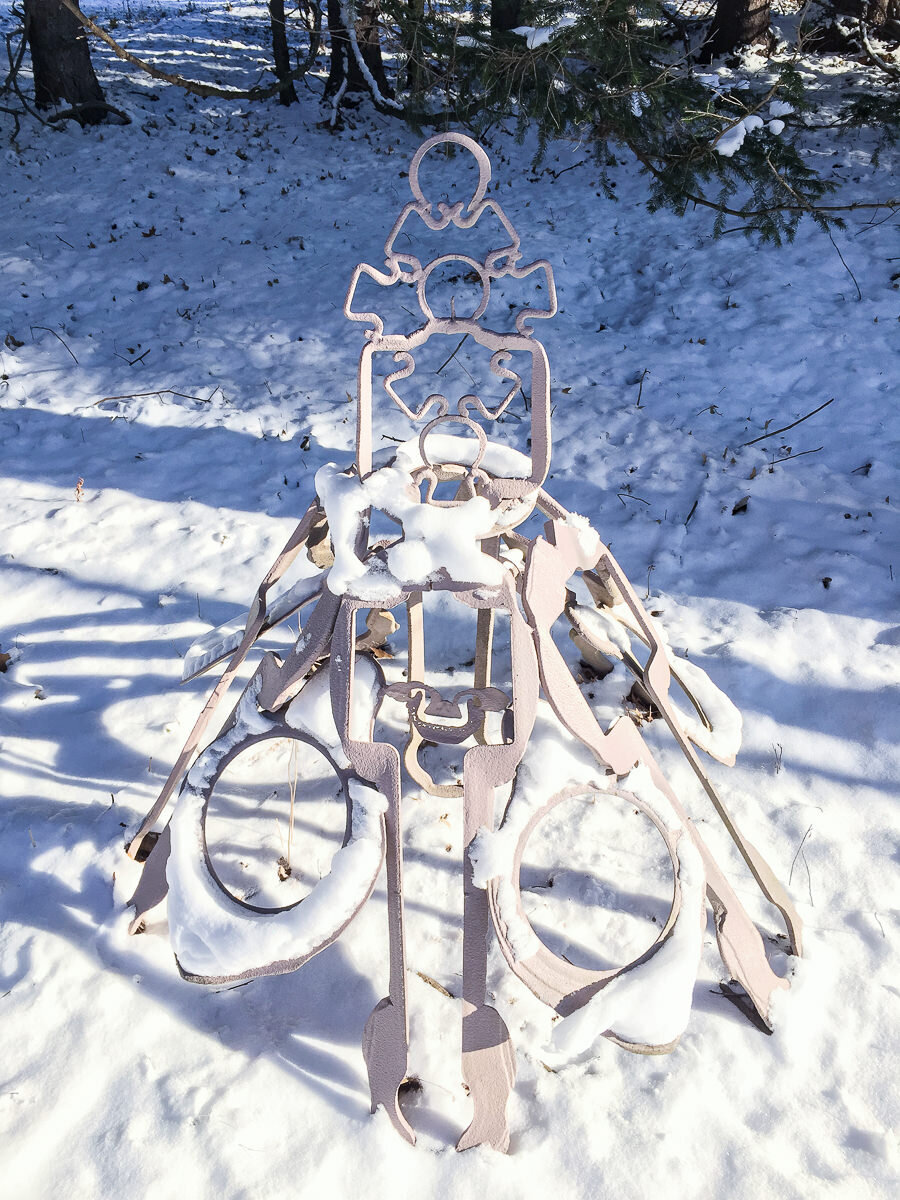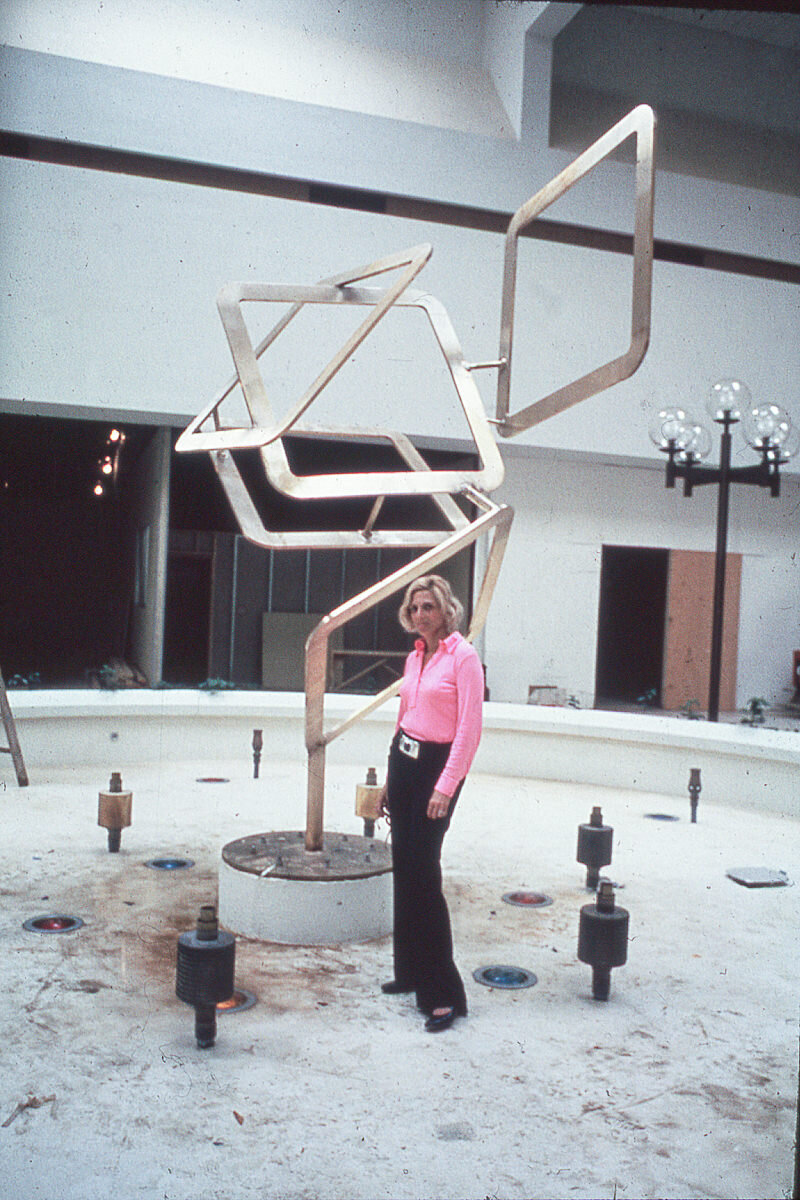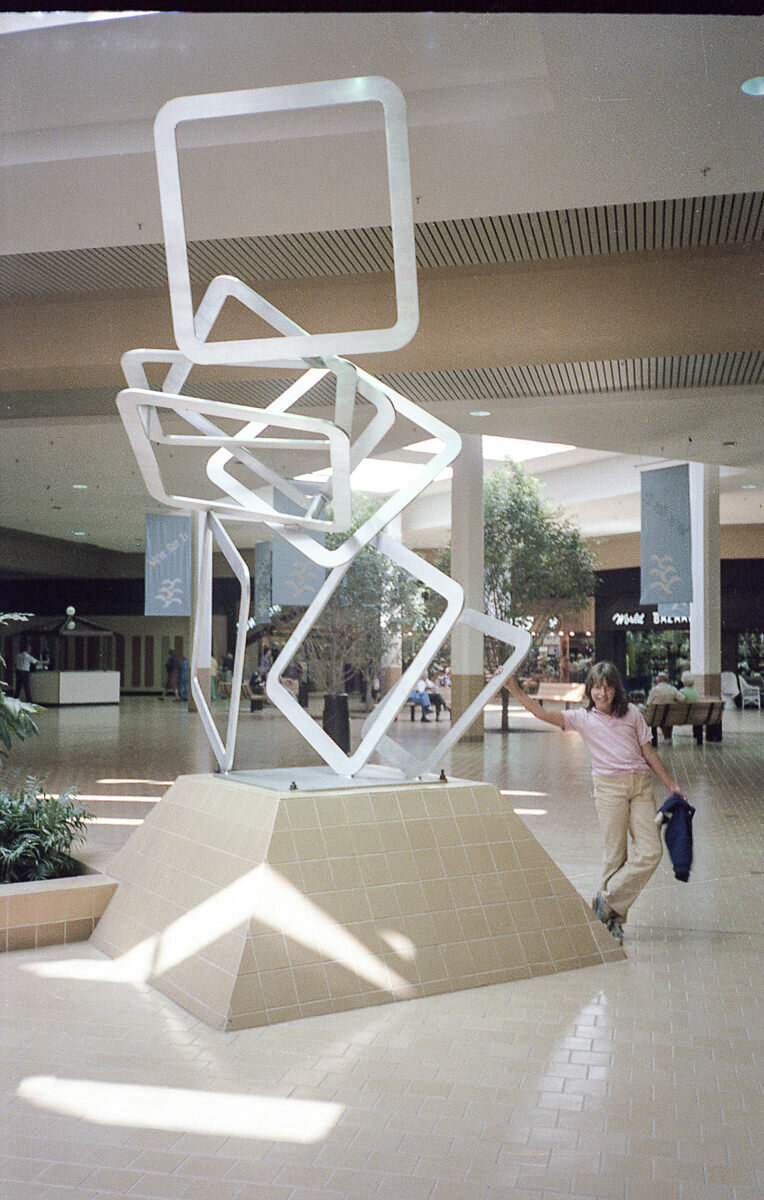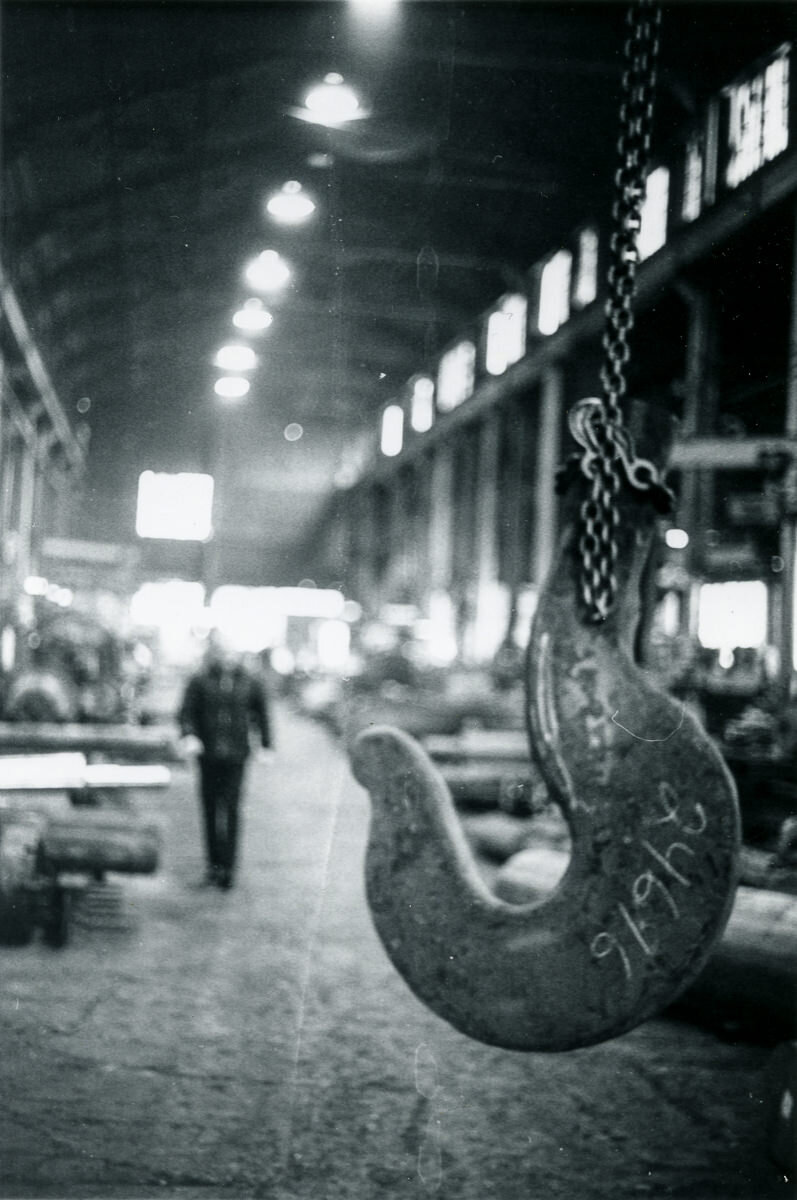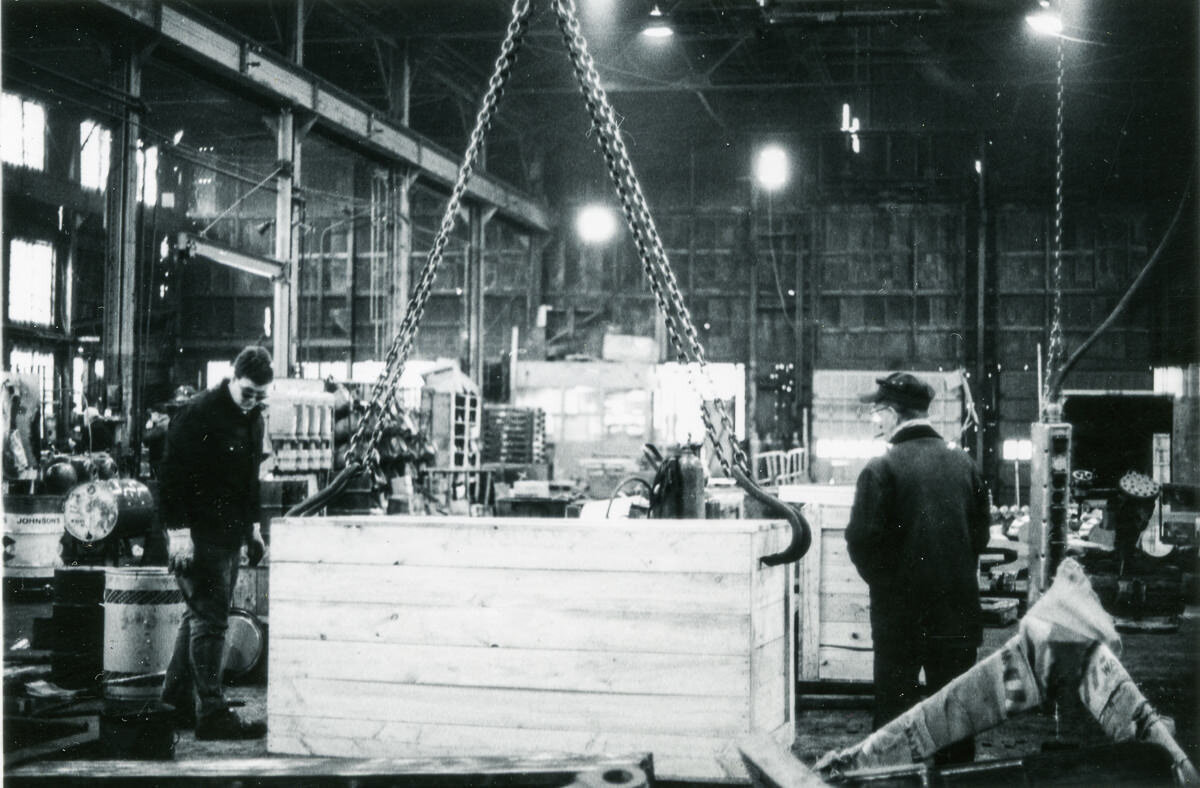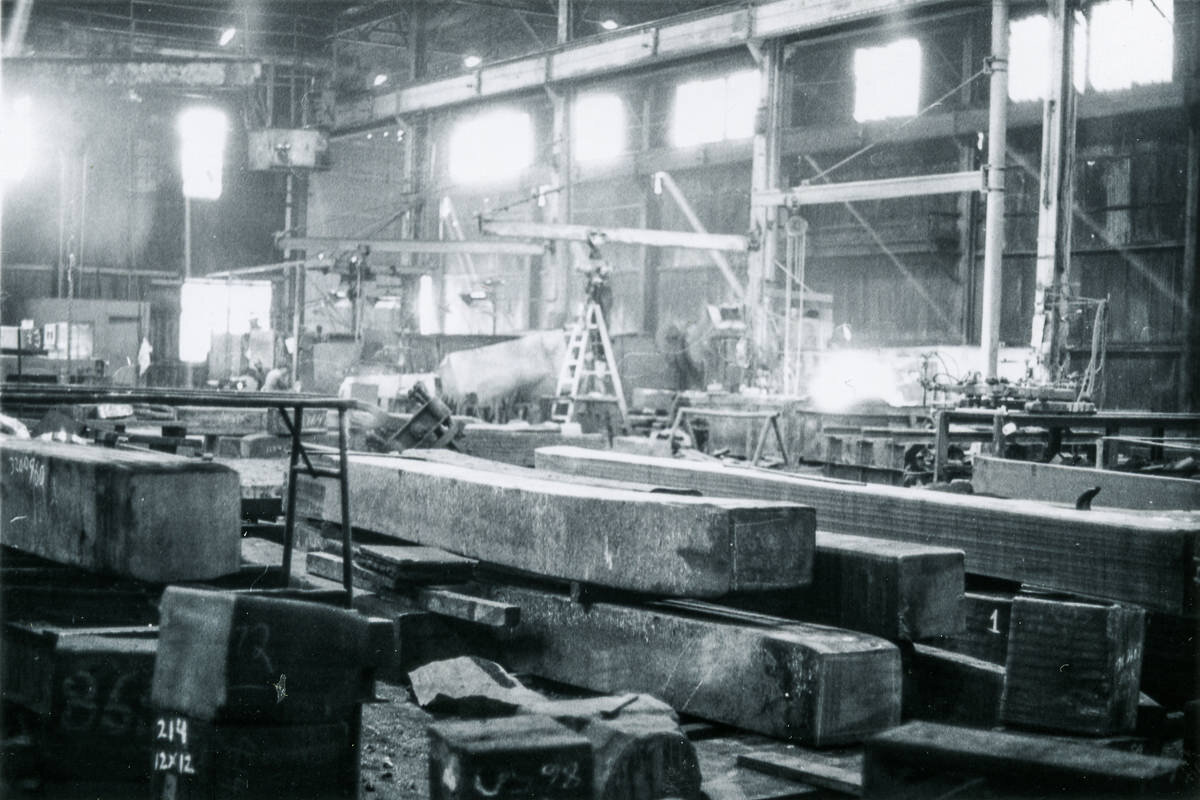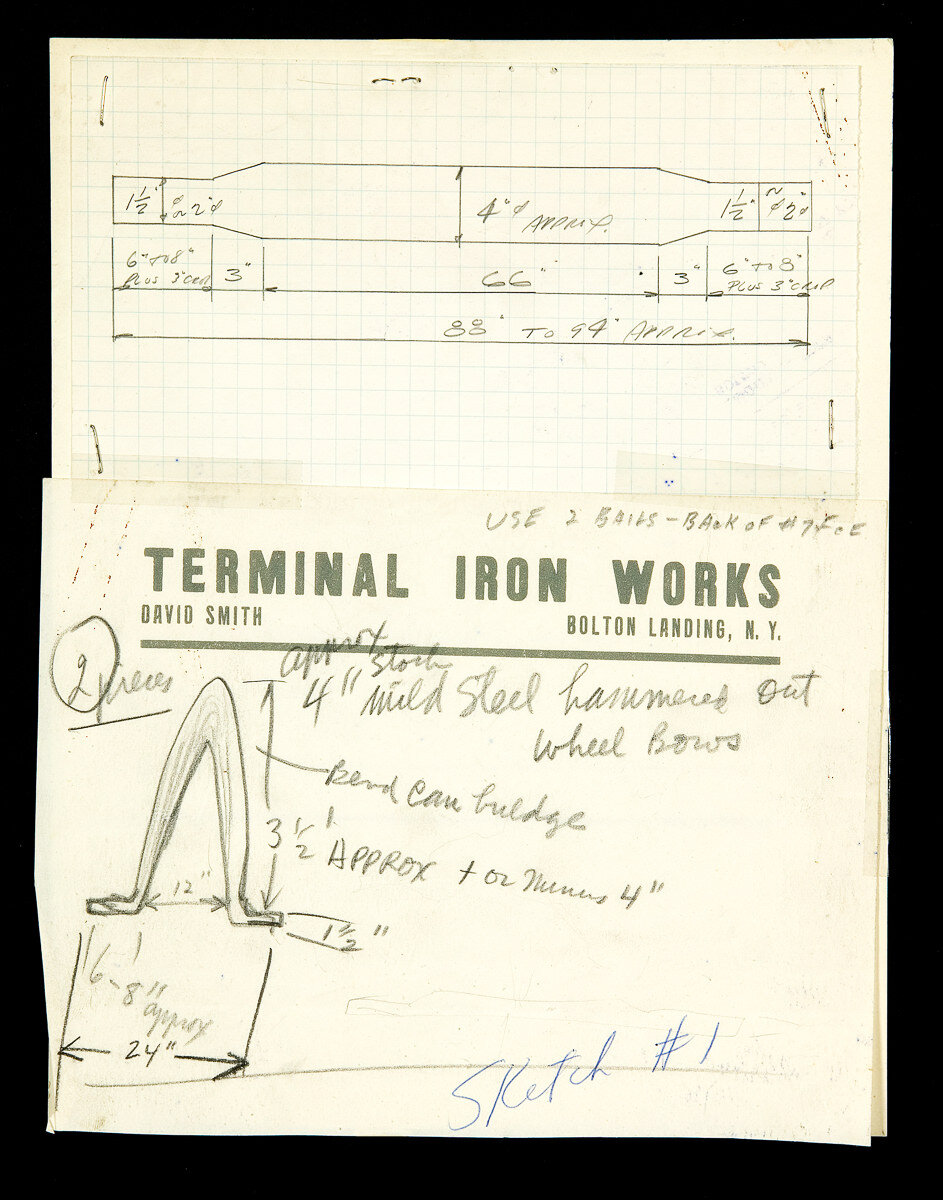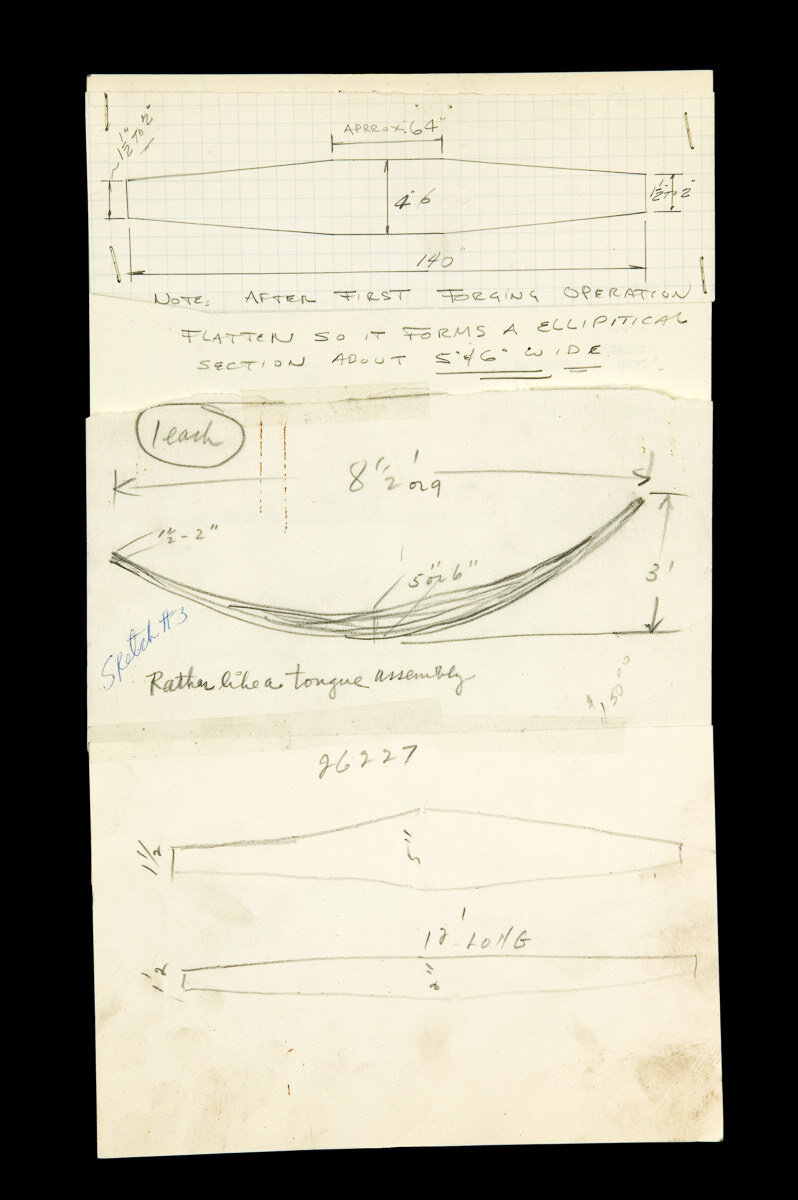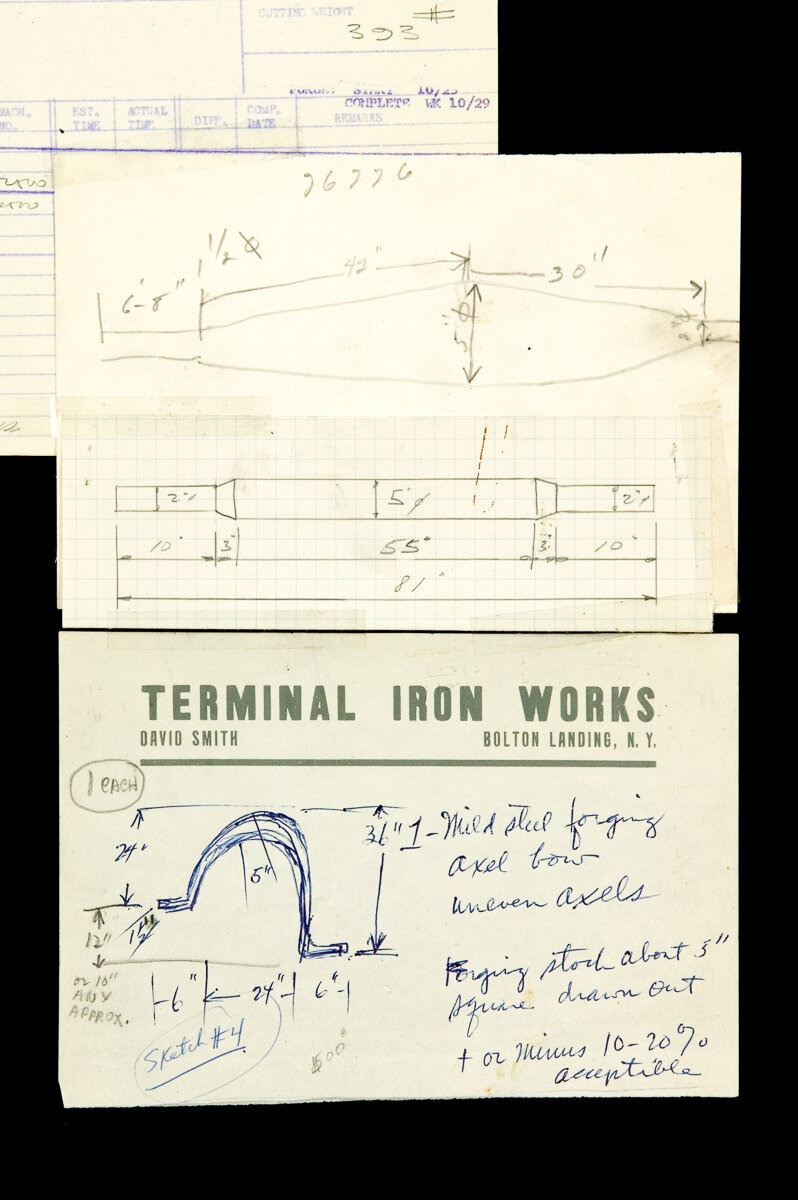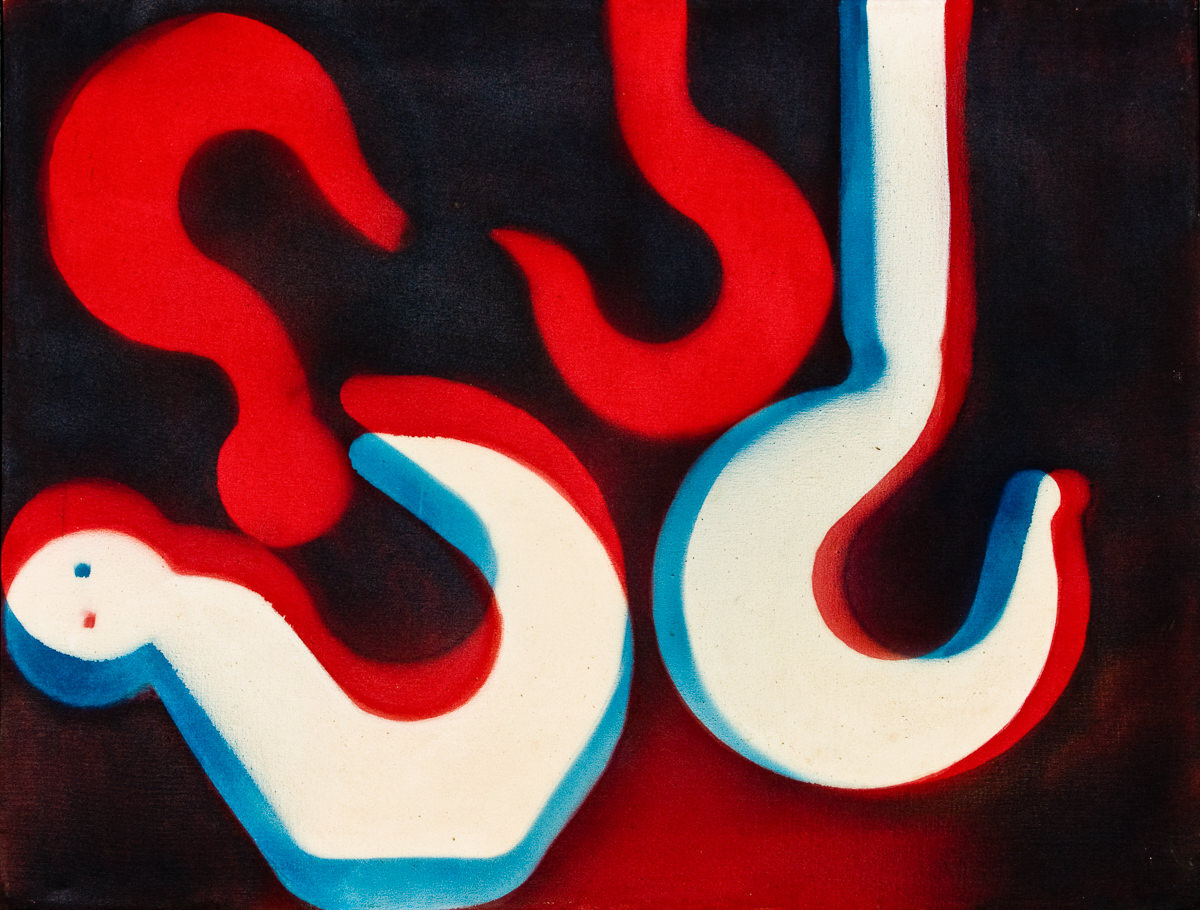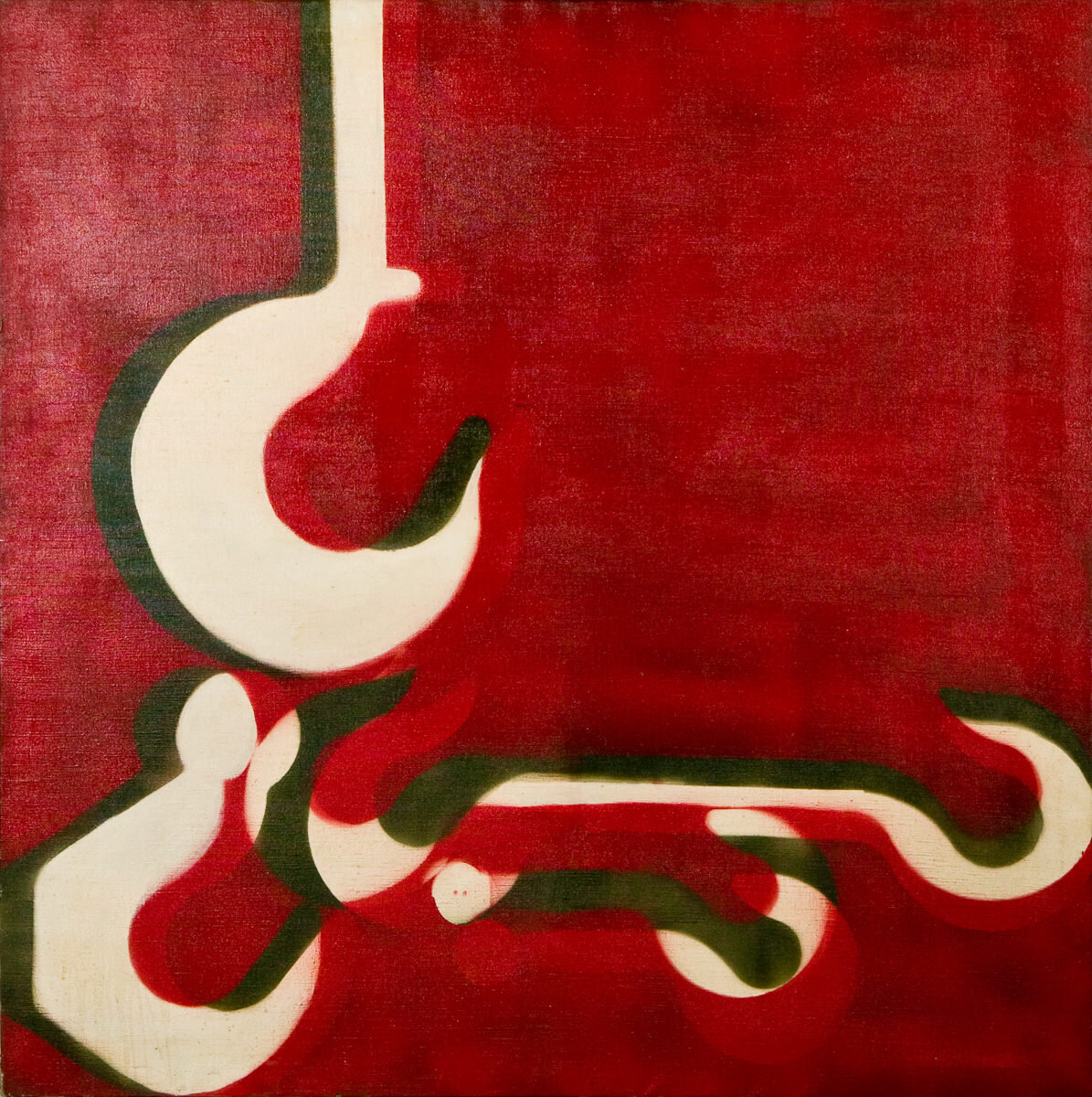From Painting to Metal Sculpture – the Transition
Aaronel’s first love in art was two dimensional – sketching, painting and college. Throughout the 1950’s she was using oils and acrylics on wood, board and canvas as she concentrated her efforts on painting. She developed into an accomplished painter, producing large canvases, and her painting, Mystery, 1960, oil on board, 31 x 49 inches was chosen first place at the Associated Artists of Pittsburgh’s 1961 annual exhibition by jurors David Smith and New York painter Theodors Stamos.
It was about this time that she intuitively began to embrace sculpture by experimenting with 3-dimensional canvases.
When Pittsburgh artist and critic, Henry Schwalb, introduced Aaronel to David Smith at the awards dinner, a whole new world opened for Aaronel. David, recognizing Aaronel’s emerging 3-dimensional sense, mentioned to Irv to encourage her to work with steel. Aaronel and Irv became friends with David who invited the couple to his farm and metal shop, Terminal Iron Works, at Bolton Landing, in upstate New York where Aaronel was promptly inspired by his field of steel sculptures.
Aaronel was unable to do any welding in her studio on Darlington Road in Pittsburgh’s Squirrel Hill neighborhood, where she painted. So on Saturdays she would work with the plant superintendent at Irv’s mill, American Forge in Mckees Rocks, Pa. She recalls that “they threw everything into the forge, including shish-kabobs.” Inspired by the various shapes of the materials themselves, she did a tremendous amount of welding on these Saturdays and this is when she produced most of her metal sculptures.
Eventually she had to abandon working at the “plant” due to issues with the union. In order to continue working with metal, she had to hire fabricators and work in their shops which became expensive. On commission, she produced Mitosis III, 1972, for Grand Central Mall in Parkersburg West Virginia and Mitosis V, 1983 for Melbourne Square, an enclosed mall in Melbourne Florida.
Mitosis III, installed in a fountain, contained Plexiglas inserts making it a very striking sculpture. However the inserts had to be removed to prevent damage due to potential vandalism. Only one of those inserts was returned which later became Pillow-Plex (Single Mitosis), 1974, 3/4 inch Naval Brass and Plexiglas insert.
David Smith was, of course, very interested in Irv’s forging business. We get a hint of this in one of the early letters he wrote to Aaronel and Irv. In it he refers to Aaronel, when they originally talked, as an “ironmongers wife”, and did not view her as the first prize winner. Incidentally this is also a testament to his impartiality as a judge.
David was able to tour American Forge while he was in town for the awards dinner. He became very excited upon seeing the scrap pile for there was much material to work with. Irv, being an astute business man told him he could have it all, just pay for shipping. At that time scrap metal was not worth much and indeed could be a liability for occupying space.
Irv’s company was very creative itself, making custom forged crane hooks. Each hook was made to a certain prescribed strength otherwise it would straighten out under weight. Among other things created by American Forge were shackles and barge couplings – a Pittsburgh thing.
It’s interesting to note that when Aaronel and Irv saw David Smith’s first show at the Museum of Modern Art in 1957, it was Irv who became energized because the work utilized forgings. David soon commissioned Irv to produce parts for his massive three sculpture Wagon series. Below are some of his drawings and instructions for American Forge.
For Aaronel and Irv and David Smith, this was a period of friendship – a time of collaboration for Irv and David – and intense inspiration for Aaronel.
References:
Aaronel deRoy Gruber oral history
Aaronel, The Art of Aaronel deRoy Gruber, by Donald Miller
David Smith, The Sculptor and His Work, by Stanley E. Marcus


